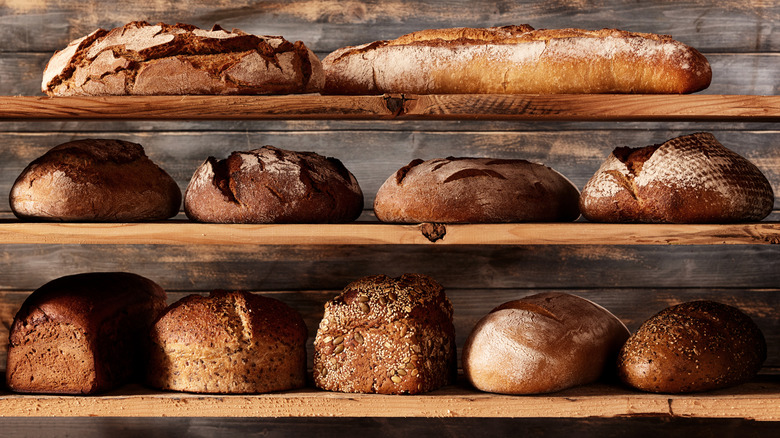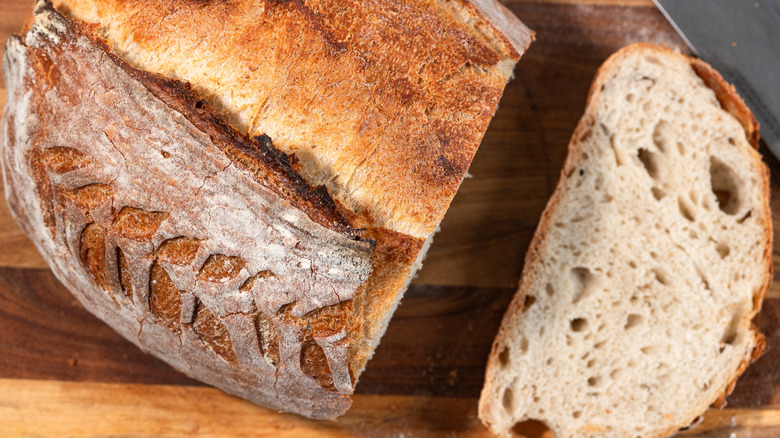Keep Your Bread Fresh For Longer With This Unconventional Vegetable Hack
Watch out, Bread, there's a new mold-fighter in your midst — and its name is celery. Yes, really. According to Ed McCormick, food formulation consultant and founder of Cape Crystal Brands, putting a celery stick next to bread in an airtight container or resealable bag at room temperature will keep your bread mold-free and moist a little longer.
Left to its own devices, bread either becomes stale or grows mold. Celery can prevent or slow down these conditions. "Celery gives off subtle moisture and phthalides, which are natural compounds that help inhibit mildew on your bread," McCormick explains. "When kept alongside the loaves, it helps balance internal humidity." While studies on bread are limited, some naturally occurring phthalides are antifungal, and research on celery extracts shows they reduce mildew growth on cucumbers.
Although you can do things like make croutons out of stale bread, a loaf that has sprung mold is beyond saving and needs to go into the trash. That's why anything you can do to reduce the possibility for mold — even if it sounds weird — is worth a try.
More bread storage hacks
Other unconventional bread storage tricks include adding to your bread bag a damp paper towel (decent for reviving stale bread when reheating it but problematic for room-temperature bread by introducing more mold-causing moisture) or uncooked rice (which will absorb the bread's moisture, drying it out more quickly but successfully preventing mold growth). "Celery keeps humidity just right in the 'Goldilocks zone,'" Ed McCormick says.
If you like keeping bread on the counter, get a breadbox. Not just for looks, a breadbox actually keeps bread fresh and is the best way to store homemade bread. Avoid storing your bread in parts of the kitchen that encourage mold, specifically near the dishwasher and stove, or on top of the fridge. All three appliances give off heat, and the dishwasher also emits steam. You want to put your bread by itself, not wrapped, inside a breadbox on your counter and away from heat-emitting appliances.
The most reliable method? Slice fresh bread, freeze it, then heat it when you need it. This way, you get delicious bread with the same perfect crust whenever you want and don't have to worry about checking for mold or breaking a tooth on a hard crumb. Putting bread in the fridge is the wrong call. McCormick says, "Refrigeration speeds up starch retrogradation, the root cause behind bread getting stale over time." It's the counter or the freezer — no in-between — and maybe with some celery.

